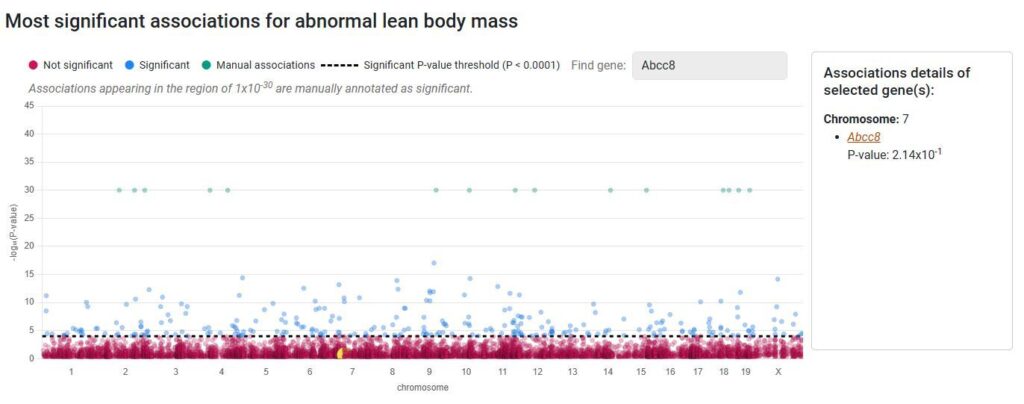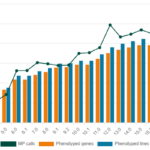IMPC data release 22 is out with an updated website. The website updates are designed to improve the user journey when exploring the data while also maintaining the familiar feel of the website for returning users. The updates include a new look for the data and search pages, improvements to the search functionalities and new interactive visualisations.
It is now easier to assess how the phenotypes are present in different datasets and alleles for the same gene. A graphical presentation of the phenotypes for different alleles has been added, and all the datasets where the same phenotype has been identified are summarised in a table highlighting the strength and prevalence of phenotypes. The graphical analysis tool shows the results for all data assesses for phenotypes. The data can be grouped by procedures and phenotypic systems with interactive elements allowing a visualisation of the phenotypic profile for each gene.
Additional filtering options are available in both the phenotype section on the gene pages and the phenotype search, allowing easier identification of the phenotypes of interest and the genes associated with them. The phenotype search results now have a graphical presentation of the p-values associated with all the genes analysed for the phenotype with links to the gene pages (image 1). Batch search functionality allows for searching data on multiple genes of interest, the results providing options for downloading data and links to view the data on the website.

All these new features are available alongside all the new data in Data Release 22. The new data release includes phenotyping data for 9,073 genes from 9,774 mutant lines with approximately 2.9 million new data points. We have reached 111,485 phenotype calls, with the addition of 4924 new phenotype calls in this release. There have been some changes to data handling with an expanded body weight window included in late adult analysis, from ±5 days to ±10 days and IMPReSS being used as the sole source of determining which parameters are analysed with body weight as a covariate.
Full data release notes can be found here: https://bit.ly/IMPC_DR22

